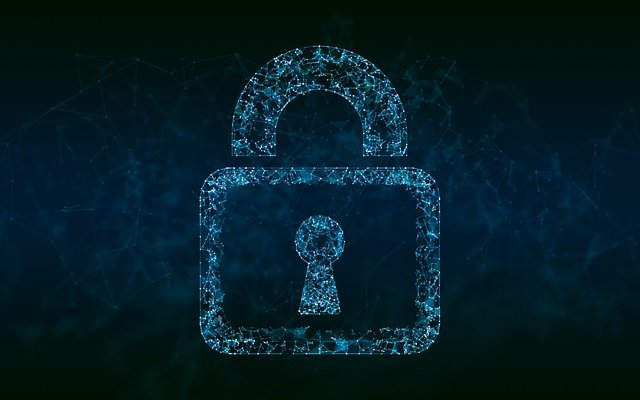How is cyber security different from information security?

How is cyber security different from information security?
While most companies use robust cybersecurity precautions, many do not have a dedicated information security strategy and are at risk of losing valuable data. Understanding the differences between cyber and information security is the first step to ensuring companies can effectively protect their information in today’s threat landscape.
From multinational companies to small businesses, every organization has important business content. Whether it’s an independent vendor that stores customers’ personal information or a large pharmaceutical company with plans for another life-saving drug, all organizations have content that needs to be protected from third-party attacks and unauthorized users.
With 39% of UK businesses reporting a cybersecurity breach in the past 12 months, it was not necessary to put in place strong security measures. However, while most companies take proper cybersecurity precautions, many do not have a defined information security strategy and as a result run the risk of losing valuable data.
Check also:
The first step for companies and technology leaders is to understand the differences between cyber and information security in order to effectively protect their data in the expanding modern threat landscape.
Cyber security, information security…? Isn’t that the same?
Simply put, cybersecurity is a broad approach that an organization takes to protect its data, networks, and devices from electronic or digital threats. These violations may consist of a malicious entity gaining unauthorized access to a network, device, or content, or installing malware on a device or network. To prevent these threats, cybersecurity controls must be in place, including network and Wi-Fi access, hardware and software configurations, and firewalls.
Part of the cybersecurity term is information security (infosec), which focuses on protecting content and data. Information, in this case, can take many forms, from purely digital content such as films and spreadsheets to physical formats such as paper files or printed documents.
Information security threats include physical data theft, content deletion, content integrity violation, and unauthorized access to data and content. Information security controls can be digital, such as encryption and password protection, and physical, such as the use of locks in file cabinets.
Since corporate information can be vulnerable to digital and physical attacks, it is important for companies to have strong IT security in addition to their cyber security. These two components work together to protect organizations from various threats.
For example, encryption is an essential control that allows companies to protect their content as well as the data on their devices and networks. Likewise, password protection and authentication tools such as multi-factor authentication allow companies to restrict access and verify a person’s identity before they can access a device, content, or the corporate network.
Education is also an essential aspect of both cyber and information security policy, and training should be used as an opportunity to explain principles and methods to employees. Training employees to recognize security threats and educating them about what to do if they believe they are under attack will ultimately help protect the company’s network, devices, and content.
How can company information be protected?
While information security and cybersecurity tactics differ, the basic principles that govern the two areas are ultimately the same. When developing company-wide information security or cybersecurity policies, organizations should consider the CIA’s trinity—confidentiality, integrity, and availability—to help them manage effective systems:
Secrecy
The principle of confidentiality ensures that only people who should have access to the content, network, or device can access it. To increase confidentiality, several controls must be introduced, such as encryption, password protection, and user rating. Organizations can also use educational programs to inform employees and other stakeholders of the importance of confidentiality.
integrity
Integrity refers to the state of the content or network and is focused on ensuring that information, devices, or networks are not altered or tampered with. In the case of information security, this could be a situation where someone changes the bank account details on the payment form, thus compromising the integrity of the form. Similarly, in the case of cyber security, if a hacker installs a virus on a computer and the virus travels around the network, infecting other devices, the integrity of the network and related devices will be compromised.
Availability
While cyber and information security software must protect the confidentiality and integrity of information, devices, and networks, it is also essential that these software do not impede access. A must have for any employee who needs access to content, networks, and devices. Factors limiting access include power outages, denial of service attacks, and hardware or software failures. In some cases, an employee who forgets their passwords or accidentally leaves the device at home may limit their access to the content they need.
These days, security of company data and networks is essential to business success. By implementing extensive and robust IT and cybersecurity policies strategically designed to protect against specific attacks, organizations can avoid damaging their reputation, losing valuable data, and ultimately negatively impacting profit margins.
About the author
Sebastien Marot is Head of Box for Europe, Middle East and Africa (EMEA). Over the course of more than 30 years of his career, Marotte has held leadership positions at major software companies such as Google, Hyperion, and Oracle. He led Google Cloud Channels in EMEA as Vice President, and previously served as Vice President of Google Cloud EMEA for nearly a decade. As one of the early pioneers of Google Cloud, Marotte was responsible for much of the growth and development of EMEA, including the launch of G Suite (now Google Workspace).
Source: IDG Connect



